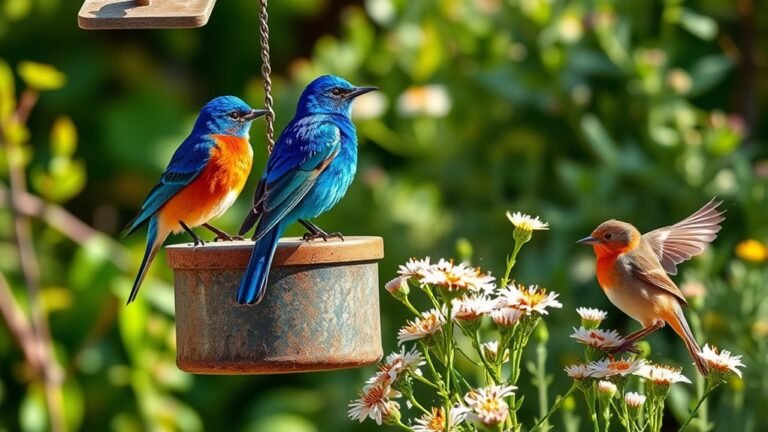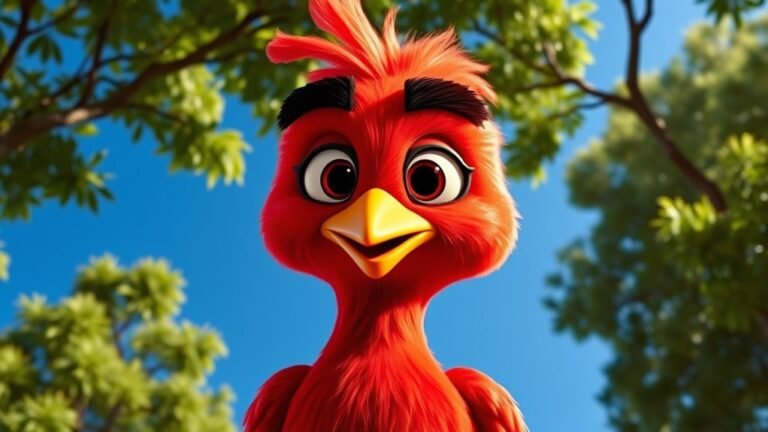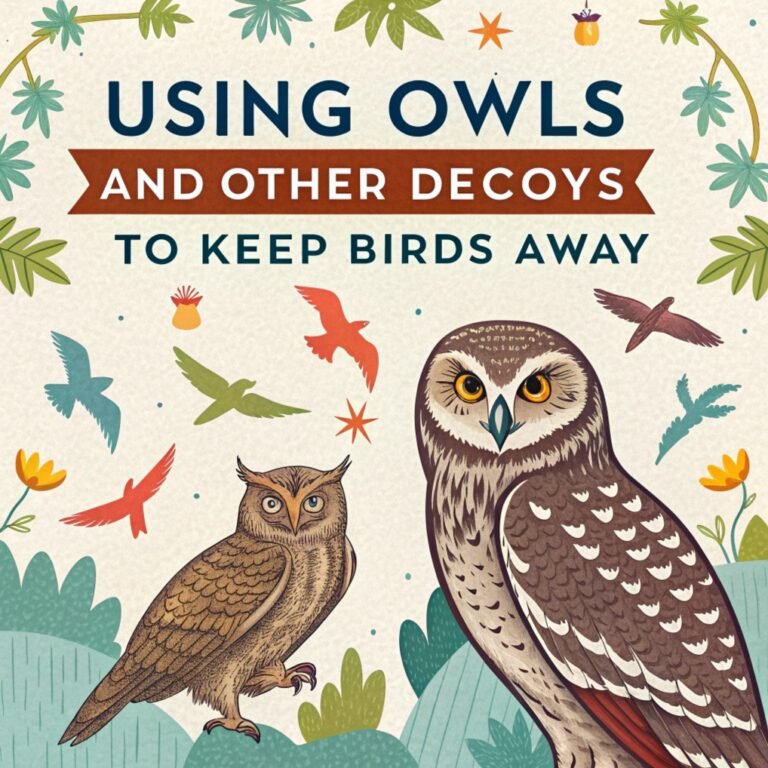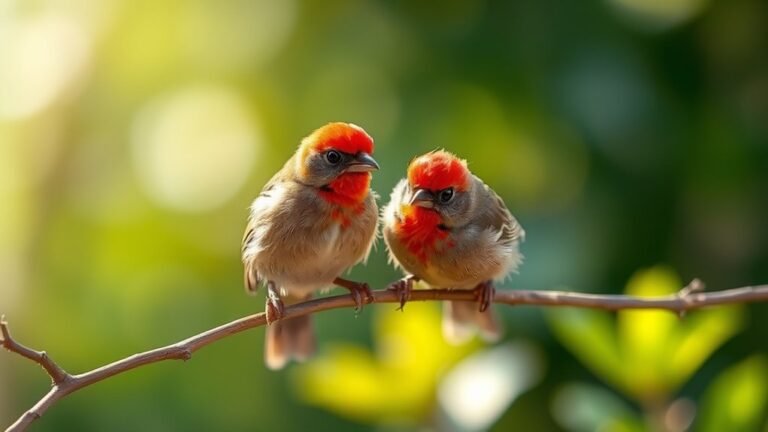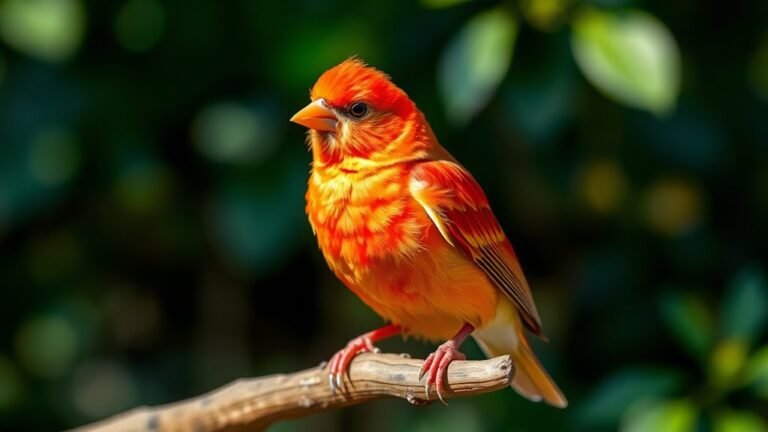Red Bird With Black Wings: Unique Avian Features
The red bird with black wings has clear features that help it survive. Its bright colors attract mates and help with temperature control. These birds have strong, cone-shaped beaks that allow them to feed effectively. They also change their nesting habits to protect themselves from predators. As you look at their environment and actions, think about how these traits help them thrive in different places. What other adaptations can you find?
Key Takeaways
- Bright plumage in red birds with black wings attracts mates during courtship and aids in species recognition.
- These birds possess specialized beaks for accessing diverse food sources, enhancing their adaptability.
- Their unique vocalization skills improve communication in dense habitats, vital for survival and social interactions.
- Seasonal migration patterns align with food availability, showcasing their resilience in varying environments.
- Conservation efforts are crucial as habitat loss threatens their population, highlighting the need for community involvement.
Overview of the Red Bird With Black Wings

The red bird with black wings captures attention with its vivid colors and distinct features. Its bright plumage helps attract mates during courtship.
This species also practices unique rituals that change based on the environment. Factors such as available habitat and food supply can influence their actions and social behaviors.
Observing these birds reveals how they adjust to their surroundings while keeping their unique identity. Their ability to thrive in different conditions highlights the link between their physical traits and the environment.
This relationship showcases both the beauty and resilience of the red bird with black wings.
Habitat and Distribution
The red bird with black wings lives in many places, including thick forests and open grasslands. You can spot it in tropical rainforests, where it flies through the trees, and in dry scrublands, where it finds shelter.
This bird is found on several continents, adapting to different climates and habitats. It prefers areas with plenty of plants for food, but it can also thrive in cities.
Knowing where this bird lives helps us understand its part in nature and the need to protect its habitats. By connecting with these environments, you can help protect the places that support the red bird with black wings.
Physical Characteristics

The red bird with black wings stands out with its bright scarlet feathers and contrasting dark wings. This striking look is important for its survival and role in the ecosystem.
Here are its key physical features:
- Size: It measures about 12 to 14 inches in length.
- Beak: Its sturdy, cone-shaped beak is perfect for eating seeds and insects.
- Wings: Long and powerful wings allow for swift flight.
- Legs: Strong legs help it perch and grip branches well.
- Eyes: Sharp eyes help it find food and spot predators.
These characteristics help this bird thrive in its environment while creating connections within its ecosystem.
Coloration and Patterns
The red bird's bright colors serve important functions in its environment. Its vivid red feathers and black wings create a strong visual contrast, helping with species recognition and attracting mates.
Color differences can reflect an individual's health and age, allowing you to identify potential partners. Additionally, the pattern of feathers can provide camouflage while resting among leaves, offering safety from predators.
This combination of color and pattern shows how birds adapt to their surroundings. Understanding these traits enhances your appreciation of bird life and its evolutionary journey.
Feeding Habits

The red bird with black wings shows strong adaptability in its feeding habits. This bird uses various feeding techniques and foraging methods based on its surroundings.
Here are some key behaviors you may observe:
- Acrobatic foraging: The bird flips and twists to access hard-to-reach food.
- Ground foraging: It scratches the soil to find hidden insects.
- Berry picking: Using its curved beak, it efficiently extracts fruits.
- Aerial hunting: The bird catches small insects while flying.
- Social feeding: It interacts with other birds to find food quickly.
These strategies help the red bird thrive in different environments as both a predator and scavenger.
Each of these behaviors makes the bird versatile and successful in its habitat.
Vocalizations and Communication
The red bird with black wings makes at least five different sounds. These sounds help the bird communicate in various ways.
Its songs have melodic patterns that make their environment lively. They use these songs to establish territory and attract mates, helping to build social bonds in their groups.
The bird also uses shorter, urgent calls to warn others about predators or to signal food. Each sound is important for keeping the community connected and promoting cooperation among the birds.
As you watch these birds, notice the details in their calls; they provide insight into their interactions and social behavior, showing you how they communicate uniquely.
Mating Rituals and Courtship
Birdsong is crucial for the mating rituals of the red bird with black wings. These calls help establish territory and attract mates. During courtship, males perform various displays to impress females and boost their status in the group.
You can see them engaged in elaborate aerial maneuvers while producing appealing mating calls.
Important elements of these rituals include:
- Clear vocalizations that fill the space.
- Vibrant plumage shown clearly.
- Distinct body movements in performances.
- Strong eye contact to grab attention.
- Defending territory to show strength.
These aspects work together to create a system of attraction that builds connections beyond survival.
Nesting Behavior
Red birds with black wings choose nesting sites based on their environment. They look for locations that offer shelter and close access to food.
These birds collect various materials for their nests, such as grasses, twigs, and feathers, showing their adaptability. Both parents are active during this time. They work together to protect and feed their young.
You'll likely see them bringing food to the nest regularly. This cooperative effort helps the chicks grow strong and increases their chances of survival.
Parental care plays a vital role in the success of their offspring.
Predators and Threats
Red birds with black wings are well suited for their habitats, but they face many dangers that threaten their survival. Detecting these threats is crucial for their safety.
Here are some common threats they encounter:
- Raptors (like hawks and eagles)
- Snakes
- Domestic cats
- Habitat loss
- Human activities
These predators take advantage of the red birds' weaknesses, especially when they're nesting or searching for food.
Understanding how these birds behave in response to these threats is important for their survival. By being aware and observant, you can help protect these unique birds and support their continued existence amid their challenges.
Conservation Status
Red birds with black wings face serious risks to their population. Habitat loss from deforestation and urbanization greatly contributes to their decline.
These birds are now classified as endangered species, with fewer individuals found in many areas.
To help them survive, active conservation efforts are crucial. Groups are working to preserve and restore their habitats. Community involvement also plays a key role. Your participation can make a significant impact.
You can support local initiatives or advocate for policies that benefit these birds. Together, we can help ensure that these beautiful creatures continue to soar in our skies for future generations.
Cultural Significance
Red birds with black wings hold significant cultural value across various societies. They symbolize important ideas that enrich human connection.
Here are some key cultural meanings associated with these birds:
- They're seen as symbols of good luck.
- They represent love and passion.
- They frequently appear in art and literature.
- They signify transformation and rebirth.
- They serve as messengers in spiritual beliefs.
These symbols create a shared experience among people, evoking feelings and fostering community.
The distinctive appearance of red birds resonates with many, linking generations and cultures. This connection reminds us of the relationships between all living beings.
Birdwatching Tips
To enhance your birdwatching experience and spot red birds with black wings, follow these steps:
- Invest in Quality Gear: Get good binoculars for clear viewing and a comfortable backpack for your supplies.
- Know the Right Locations: Visit woodlands, parks, and wetland areas where these birds are often found.
- Choose the Best Times: Go birdwatching early in the morning or late in the afternoon. Birds are most active during these times.
- Be Patient: Stay quiet and observe your surroundings carefully. Use your senses to detect bird movements and sounds.
- Join a Community: Connect with local birdwatching groups. Sharing experiences and tips with others can enhance your knowledge and enjoyment.
Unique Adaptations for Survival
Red birds with black wings have unique traits that help them survive in different environments. These birds use effective strategies to overcome challenges and thrive. Their bright colors provide camouflage and indicate health to potential mates.
Key adaptations include:
- Specialized beaks that allow them to eat different foods.
- Vocalization skills that improve communication in dense areas.
- Flexible nesting habits to stay safe from predators.
- Seasonal migration to follow food sources.
- Coloration that helps them keep cool.
These features enhance their ability to adapt and survive. Understanding these traits creates a stronger bond in the birdwatching community.
Frequently Asked Questions
What Is the Lifespan of the Red Bird With Black Wings?
The lifespan of the red bird with black wings is typically between 5 to 10 years. Factors such as breeding habits and habitat can affect how long these birds live. Stable environments help improve their chances of successful reproduction. As a result, these birds tend to have healthier and longer lives in their natural homes.
Do These Birds Migrate Seasonally?
Many birds migrate seasonally. They move to find food and better living conditions as the seasons change. Their migration patterns depend on weather and food availability. This relationship is essential for their survival and adaptation to their environment.
Are There Any Notable Myths Surrounding This Bird?
Many myths exist about this bird, rooted in folklore. Different cultures view this bird in various ways. Some see it as a symbol of transformation, while others link it to wisdom. These stories highlight humanity's bond with nature and our shared narratives.
What Are the Common Sounds Made by This Bird?
This bird makes a variety of sounds that capture attention. It has distinct calls and melodic songs. The tunes are lively and change in pitch and rhythm. These sounds help the bird communicate with others and connect with its surroundings. Listening to these calls enhances your appreciation of nature.
How Can I Attract Them to My Garden?
To attract birds to your garden, set up bird feeders with their favorite seeds and plant native flowers. These actions will create a friendly space, making it more likely for birds to visit while also improving your garden's variety of life. Enjoy watching the birds come to your garden and listen to their cheerful songs.

Hello, I’m Amelia White, the founder of birdsfanatic.com. As a lifelong bird enthusiast and spiritual seeker, I’ve always been fascinated by the mystical connections between birds and the human experience. On this site, I share my knowledge and insights into the symbolic meanings and spiritual significance of various bird species, exploring their roles in mythology, folklore, and cultural traditions. Join me on this journey into the world of birds, where we’ll discover the hidden wisdom and guidance that these magnificent creatures have to offer.


